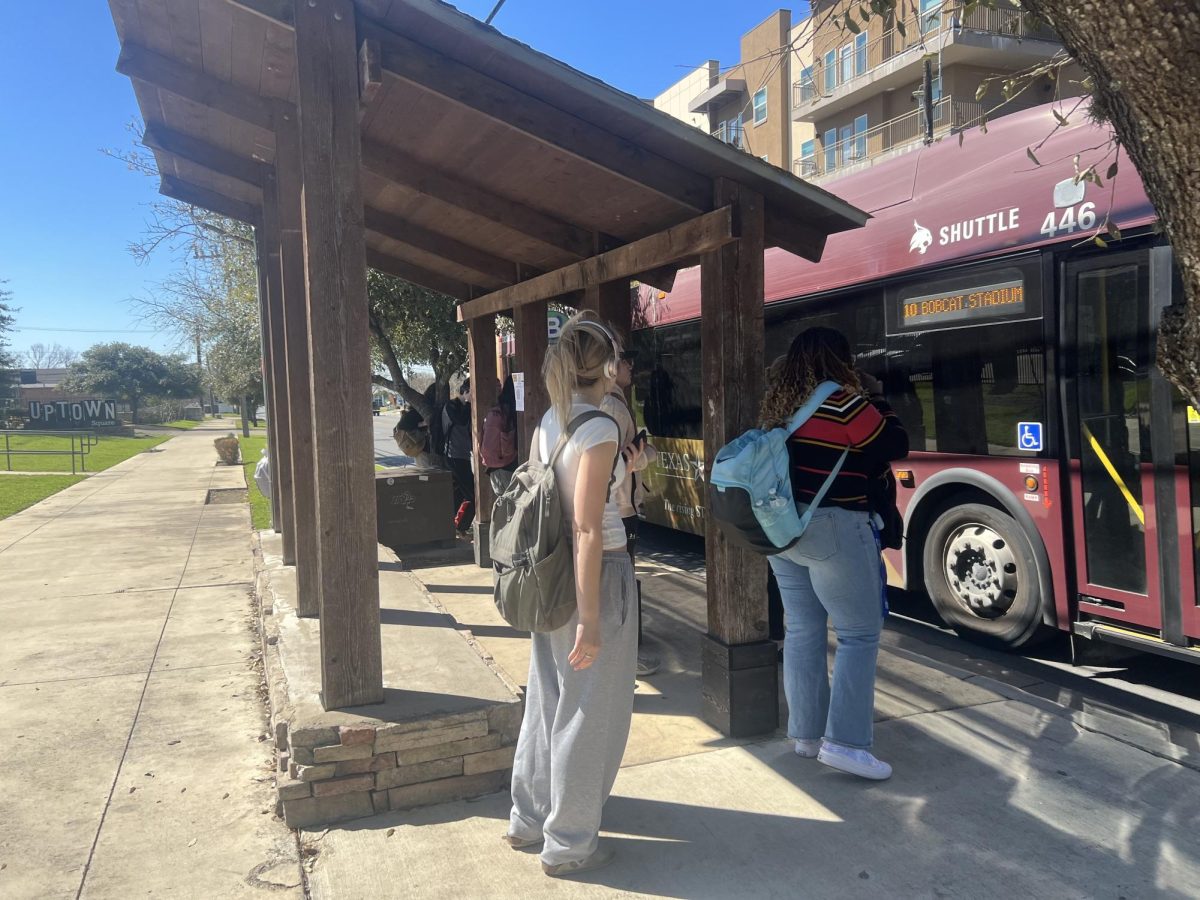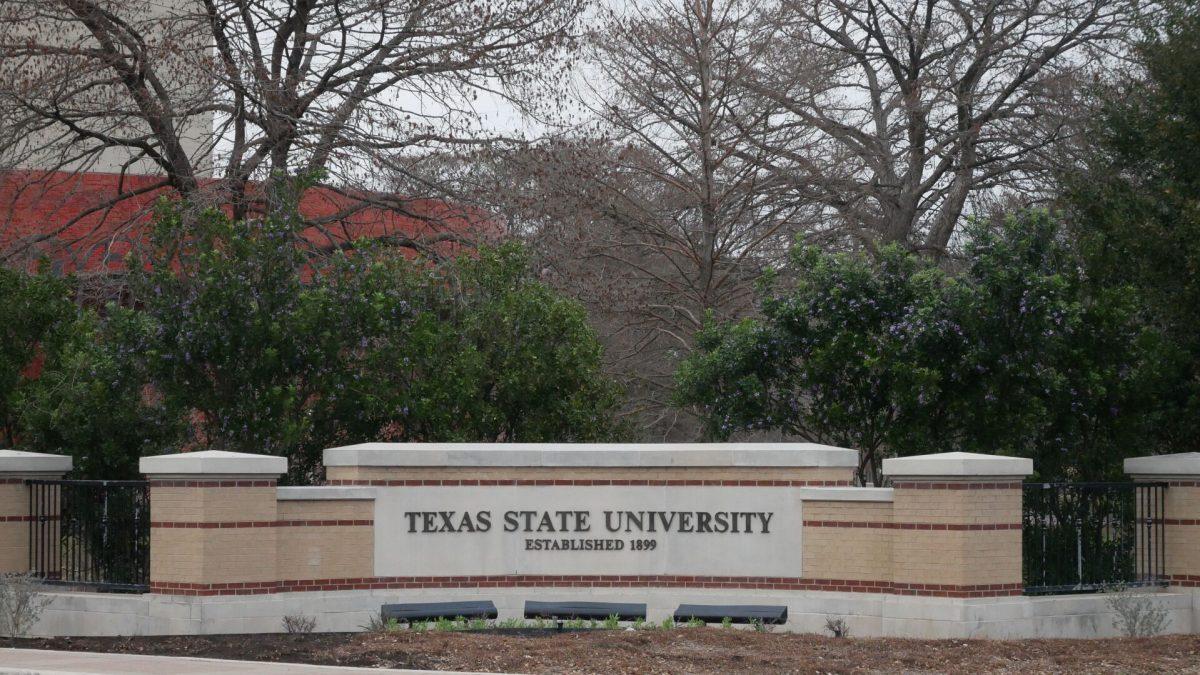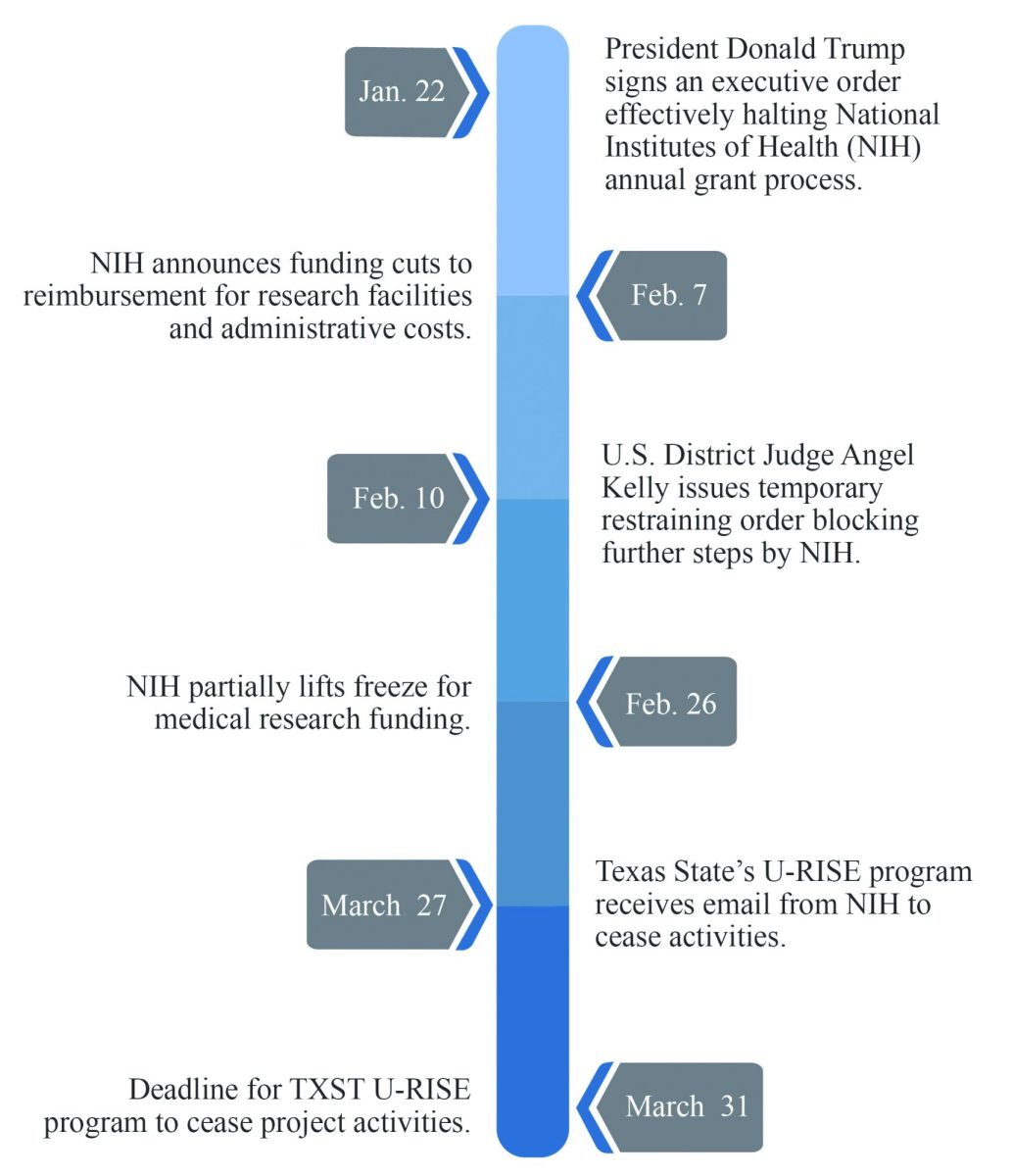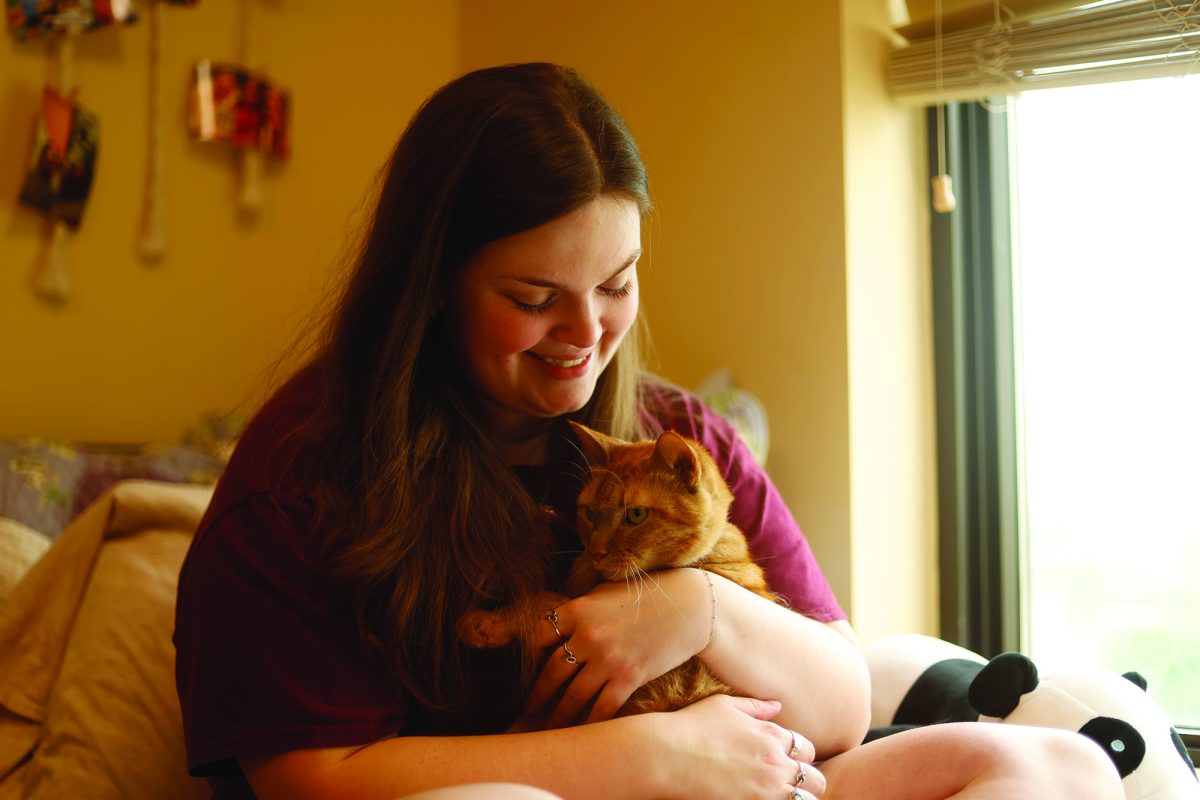At the end of fall 2023, Texas State finalized the purchase of two off-campus apartment complexes: Vistas and Sanctuary Lofts. Now, as new management takes over, residents are adapting to the changes ensued by this shift.
The two complexes, which are now considered Texas State on-campus housing, brought in 1,086 beds to the university’s housing inventory for returning students only. According to William Mattera, executive director of Housing and Residential Life (DHRL), the reason for the purchase was due to a housing demand study conducted in spring 2023 which showed the cost of living off-campus in San Marcos increased by 42%.
“The goal is to increase our inventory by buying beds, which is cheaper than building beds,” Mattera said. “Just looking at what properties were adjacent to campus was really important to us… it’s about creating additional affordable opportunities for returning students to be able to move on campus.”
Mattera said Texas State purchased the two complexes for $140 million from American Campus Communities (ACC), which saved $35,000 per bed for the university in comparison to if it would have built a new dorm.
Similar to off-campus complexes, Vistas and Sanctuary Lofts currently have rooms not occupied by residents. However, Mattera said DHRL plans to fill those by fall.
There are two main types of leases students will encounter when seeking off-campus housing: a joint lease and a rent-by-the-room lease. Vistas and Sanctuary Lofts operate on rent-by-the-room leases.
Ethan Chou, a staff attorney at Texas State’s Attorney For Students, said although the initial cost of a joint lease may appear high, it covers the entire unit, allowing tenants to divide the expense among themselves. On the other hand, an individual lease may seem more affordable, but since the cost is per room, the total sum can end up being higher than a joint lease.
“So landlords are actually making more money with a rent-by-the-room lease… if you have someone you trust enough to share a joint lease with, you could practically save more money,” Chou said.
According to Mattera, before Texas State took over the complexes, residents had an 11.5-month rent-by-the-room lease spanning from August to July.
Now, residents can choose to switch to a 10-month contract from August to May, keep their original lease or cancel their entire lease with no penalties.
“A lot of students made really intentional choices about where they wanted to live next year with the mindset that it is not an on-campus property, so we did not want to trap students when we knew behind them there were a lot of students who would openly like that process,” Mattera said.
Current residents opting to switch from their original lease to the 10-month lease, residents who signed leases after the acquisition and incoming residents, will experience a shift from monthly rent payments to payments per semester through Texas State’s portal. The only ones allowed to continue with monthly rent payments for the next year are residents who signed an 11.5-month lease before the purchase of the complexes.
According to Mattera, the pay-by-semester method will allow students to allocate financial aid money toward their rent.
“What this will do is move [rent] billings into the financial aid cycle, so it will be a normal bill at the start of the semester and if you get aid it will pay that bill for you,” Matter said. “We think it will be easier for students to manage that period of time.”
A change that took Skyla Murray, a Vistas resident and criminal justice senior, by surprise was the Vistas’ announcement that resident assistants (RAs) would be assigned to both complexes.
“It’s crazy to do room checks and things like that because this is an apartment,” Murray said. “I feel like they’re taking some of that independence away from us by buying the Vistas.”
However, Mattera said the goal with RAs is not to recreate the first-year experience for upperclassmen. While in residence halls, one RA is appointed for every 32 students. At Vistas and Sanctuary Lofts, one RA will be appointed for every 50 students.
“RAs walking in the building are to make sure doors stay locked and things are secured. Also, students have crises everywhere they live so RAs can be someone they go to,” Mattera said. “Then there is the facility component, [RAs] can be in the building to have their eyes on things that may go wrong.”





















